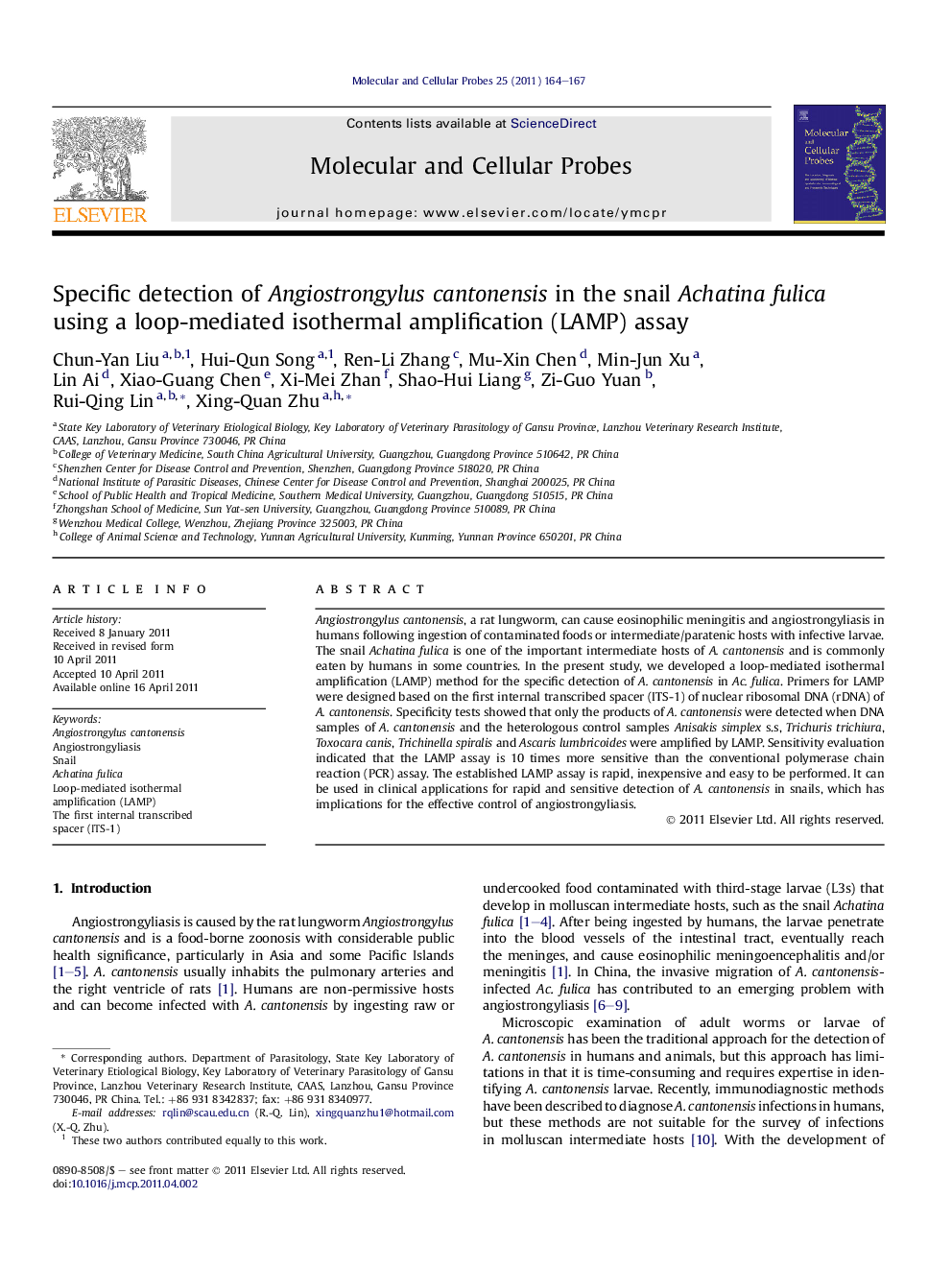| Article ID | Journal | Published Year | Pages | File Type |
|---|---|---|---|---|
| 2199782 | Molecular and Cellular Probes | 2011 | 4 Pages |
Angiostrongylus cantonensis, a rat lungworm, can cause eosinophilic meningitis and angiostrongyliasis in humans following ingestion of contaminated foods or intermediate/paratenic hosts with infective larvae. The snail Achatina fulica is one of the important intermediate hosts of A. cantonensis and is commonly eaten by humans in some countries. In the present study, we developed a loop-mediated isothermal amplification (LAMP) method for the specific detection of A. cantonensis in Ac. fulica. Primers for LAMP were designed based on the first internal transcribed spacer (ITS-1) of nuclear ribosomal DNA (rDNA) of A. cantonensis. Specificity tests showed that only the products of A. cantonensis were detected when DNA samples of A. cantonensis and the heterologous control samples Anisakis simplex s.s, Trichuris trichiura, Toxocara canis, Trichinella spiralis and Ascaris lumbricoides were amplified by LAMP. Sensitivity evaluation indicated that the LAMP assay is 10 times more sensitive than the conventional polymerase chain reaction (PCR) assay. The established LAMP assay is rapid, inexpensive and easy to be performed. It can be used in clinical applications for rapid and sensitive detection of A. cantonensis in snails, which has implications for the effective control of angiostrongyliasis.
